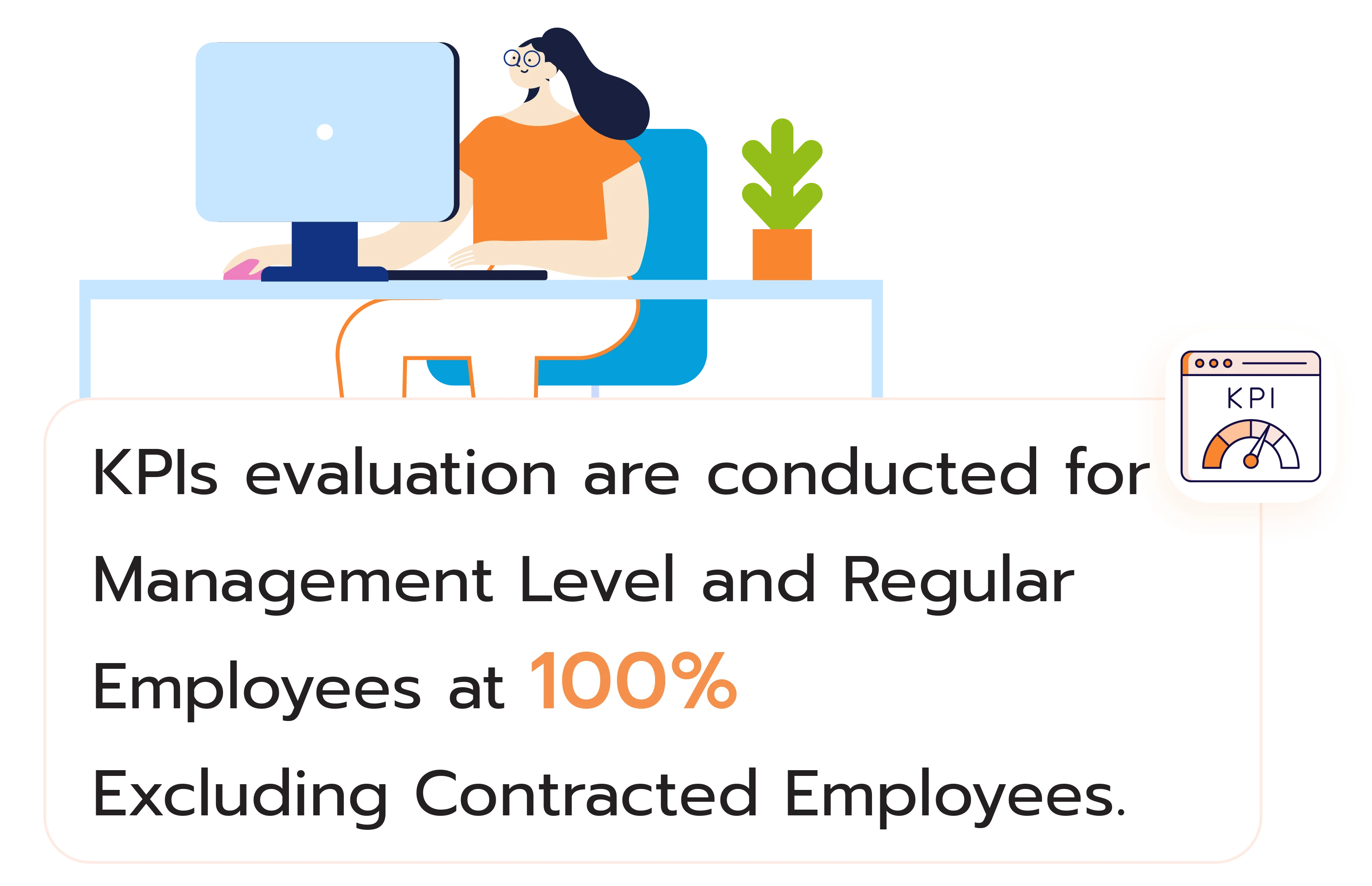
Labour Standards
Organizational Importance and Commitment
Human resource is an important asset for corporate growth and success in the long term. Investment in human resource by creating a happy workplace, paying respect to employees’ rights, promoting acceptance and respect to each other, and giving support and collaboration between working teams helps employees have work motivation and contributions, which would further boost their work efficiency and competitiveness.
Opportunities and Impact
Respect and compliance with labor rights help create the business image. This helps create the acceptance in term of compliance with law and promotion of employee rights, be trusted by stakeholders, attract and retain the capable personnel in the Company, have work satisfaction that takes effect to the corporate commitment, and reduction of turnover rate and expenses for training new employees. The violation or non-compliance with the principles of labor rights may cause dissatisfaction and internal conflicts, legal risks, impaired business reputation and no confidence in the long term.
Supporting the SDGs Goals
Goal 3:
Goal 5:
Goal 8:
Goal 10:
Stakeholders Directly Impacted
Goals and Performance
| ESG Performance Indicators and Targets | 2024 Performance Results |
|---|---|
| The number of employee training and development is more than 18 hours per person per year | hours per person per year |
| 80% of employees in support functions have been provided with individual development plans within their departments, and implementation has proceeded according to plan | |
| Identify successors and completely determine the IDP of all departments in Loxley Plc. | Succession plans have been developed for 35 key positions, with successors identified for 15 positions, representing |
Management Guidelines
Strategy
Management Approaches
Human Resource Development (HRD)
The Company provided the training needs analysis for the employees which are assessed by the overall corporate strategy and goals, necessity based on job description, key responsibility of each business line, tendency of business changes, together with other information about capabilities necessary for key job positions, succession plan, and individual development plan obtained from the performance evaluation. The Company promoted the personnel development through various methods by direct and indirect learning models in various ways, e.g..
Performance Evaluation for Employees
The Company established a structure for employee remuneration that is consistent with the Company’s short-term and long-term operating results through the Performance Management System (PMS) to ensure the targeted operating results are achieved and in conformity with the organization’s business direction strategy. By considering increasing employees' salaries based on individual performance once a year, through using of key performance indicators (KPIs) linked to all four aspects of the organization’s operational strategies:
Which must be in line with the Company’s present operating performance (short term) and strategy plan to be undertaken in the long term to reach the established targets sustainably, e.g., business expansion, profit growth, continuous operating efficiency improvement, operating performance relating to sustainable development, etc.













